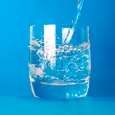
It was band day at a university, and students were dropping like flies, or maybe worse than flies; I’ve never really seen a group of flies actually drop. The temperature on the artificial surface was so hot that if the plastic clarinets had melted, I would not have been surprised. By the end of the day, more than 40 students had been taken to local emergency rooms; fortunately, although many of our students had to sit out portions of the rehearsal, none had to leave the event. Even so, the experience scared me a little because I had not anticipated how unbelievably hot it would be and was dependent on the university to hydrate our students properly. Water was available, but supplying it in a timely manner to 1,000 students was a problem. I took the event as a warning to check all of my program’s heat-related procedures to see if there were things I could improve, because the health and safety of students should be a high priority in all situations.
This particularly applies to rehearsals and performances during the hot summer months when heat illness is an ever-present danger. Heat illness is a medical condition that arises when the body is unable to cool itself adequately. High school band and color guard students in many states are susceptible to heat illnesses because of high temperatures and humidity levels. The good news is that heat illness is easily preventable, and there are several important practices that can help you avoid its dangerous effects.
Preparation. First, it is important to have parents complete a health form for their child. Make sure there is a place on the form where the parent can indicate if the student has a history of heat illness or other conditions that can be aggravated by exposure to hot conditions.
Band directors should establish an emergency procedure policy before the start of marching season and then clearly communicate it to students, parents, staff, and administration, whether it is via a band handbook, band website, letter, or email, whatever happens to be your primary means of communication. All concerned should be made aware of your heat illness prevention plan, one that is sure to include 9-1-1 emergency procedures.
If you are like me and cannot remember everything in an emergency situation, it is critical that the right steps be taken to assure a student’s safety. A Heat Aware Card (available online) or any number of smartphone apps can be on hand to provide the information you need in an emergency situation.
Watch the weather. Heat stress is affected by air temperature, humidity, and direct sunshine. Use the heat index or a wet bulb temperature/wet bulb globe temperature as a guide for workouts or competitions. Modify practices in response to the environmental conditions.
Proper preparation for students begins the night before with a good night’s rest. Strongly encourage students to always eat a meal before a marching practice or performance. Healthy pre-practice or performance meals should consist of items such as fresh fruit, vegetables, whole grains, toast and peanut butter. Items to avoid include carbonated beverages, fruit juices, dairy products, syrup, energy drinks, and anything loaded with caffeine or sugar. Fruit juices can slow fluid absorption and cause an upset stomach; also, they often lack sodium that needs to be replenished to the body after sweating. Carbonated beverages, such as soft drinks, can reduce voluntary drinking due to stomach fullness and throat burn when gulping; they also lack sodium. Energy drinks should be avoided because many contain caffeine and have high carbohydrate concentrations, which slows the emptying of fluids from the stomach.
Acclimation. It is important to work students into the heat gradually. Many students have spent the summer in air-conditioned comfort, munching Cheetos while watching television or playing on their smartphones. Whatever marching elements can be taught inside need to be taught inside. Begin in the most comfortable environment, whether it’s the band room, choir room, cafeteria, auditorium stage, or field house. A good medium step would be an un-air-conditioned gymnasium. Many elements of marching can be taught in this setting. Then move outside in limited time periods. Early morning and evening are best.
Attire. Students should wear light-colored, lightweight, loose-fitting clothing. Clothing made from moisture-wicking material helps facilitate the evaporation of sweat as well. Some students may even need to change into dry clothing after an outdoor session or even during breaks. Appropriate footwear includes athletic shoes and socks. Students should be encouraged, if not required, to wear sunscreen and sunglasses.
Hydration. Appropriate hydration begins the day before a marching practice or performance. Students should begin drinking water the day before. Sodas dehydrate the body and should be avoided. Students should drink a minimum 20 ounces of water or a sports drink two or three hours before. While at school, students should drink plenty of water during the day, not just when they are thirsty. Make sure your school allows students to carry bottled water with them throughout the day.
During rehearsals, students should be provided regular water breaks and afforded at least five minutes to drink and return to practice. At no time should hydration breaks be taken away as a disciplinary procedure. To properly hydrate students in a given amount of time, students should bring their own water. Some schools have parents who maintain a hydration station to provide hydration in a timely manner.
Following halftime or contest show performances, all students should be provided with water or a sports drink. The same is true at the conclusion of a marching practice – everyone should hydrate. Students must be taught that it is not only acceptable but required to notify the band director if they are feeling ill.
Know the Signs and Appropriate Actions
If dehydration goes unchecked, the risk of heat illness increases. Heat illness has three separate degrees of severity: heat cramps, heat exhaustion, and the most serious and deadly form, heat stroke. The symptoms outlined below do not necessarily occur in progression, so heat stroke can occur in the absence of some of these symptoms.
Heat rash or prickly heat appears as tiny red dots on the skin where there has been excessive sweating and the sweat has stopped evaporating on the skin. If this occurs, replace the wet clothing with cool, dry clothing and move into a cool environment.
Heat cramps are muscle spasms caused by salt loss and dilution of tissue fluid. Students with heat cramps should move into a cool environment and drink water or a sports drink. Water is the best source of hydration, but some research has shown a properly formulated sports drink is best when one has been sweating for more than an hour because it has electrolytes to replace what is lost through sweating, flavor that encourages children to drink more, and carbohydrates to provide energy for working muscles. Remember to avoid caffeinated beverages; they will only make things worse.
Heat exhaustion symptoms may include noticeable difficulty paying attention, thirst, chills, clammy skin, a pale complexion, fatigue, nausea, light-headedness, headache, excessive sweating, and a rapid, weak pulse. Treatment of heat exhaustion is similar to that of dehydration and should take place immediately: find a cool place for the student to rest, place ice-cold towels on the body, provide them a sports drink that contains the adequate amount of electrolytes, and have them lie down with the legs elevated to promote circulation.
If the student does not feel better relatively soon, they may be suffering from heat stroke. With heat exhaustion, a person’s condition will get gradually better, but with heat stroke it will gradually worsen.
Heat stroke is a medical emergency that can result in death if not immediately treated. Symptoms include an absence of sweating, skin that is hot an dry, dizziness, confusion, loss of consciousness, convulsions, a strong rapid pulse, and a body temperature over 104°. (If emergency personnel are not on hand, this may require that you take a student’s temperature using a thermometer from a readily-available medical kit.) Call 9-1-1 immediately. Until help arrives, cool the student as rapidly as possible. An ice bath is the best way to do this, but this will require a readily available tub. Athletic facilities should be equipped with one, so make sure quick access to it is always possible. Other options are putting ice packs over as much of the body as possible or spraying the student with cold water. Cool, wet towels can also be effective in bringing the body temperature down. Remember to cool the child first and transport the child second. Do not have the affected student drink fluids, because nausea and vomiting are extremely common. Remove the student from cooling source when temperature is lowered to 102°.
Conclusion
If you have not had a well-defined program for heat illness and have had no problems so far, consider yourself lucky. Get one set up before your luck runs out. One preventable tragedy is one too many.






